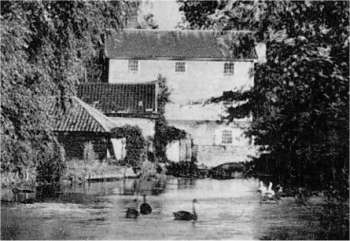 |
|
c.1907
|
|
Hoxne Mill
River Waveney |
 |
|
c.1907
|
|
Hoxne watermill
was built in 1846 to replace the earlier building of 1749, which in turn
replaced an earlier building on the same site. Somewhere just prior to
rebuilding, the 1749 building had been converted from corn milling to
flax and linen manufacture. Eventually the mill was converted back to
corn milling and it may be that this change of use occurred several times
throughout its life. |
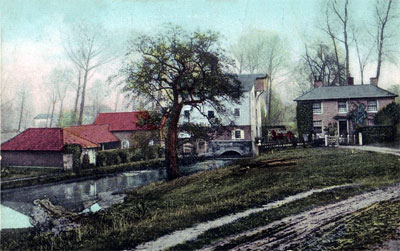 |
|
c.1910
|
|
Originally there were 4 pairs of stones, although only two pairs remained by 1968. The 15' 9" iron undershot wheel was 6' 8" wide and was made by Knights of Harleston. Eventually the wheel was supplemented by steam with a steam shed being attached to the rear of the mill along with its distinctive tall chimney that stood above the ridge of the mill. |
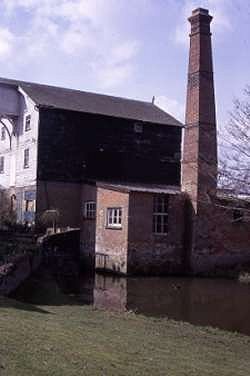 |
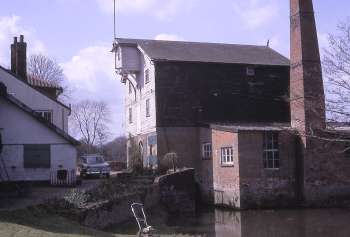 |
|
Steam shed March 1968
|
Mill
and steam shed March 1968 |
|
On 16th November 1784, William Cook insured his dwelling house brick and tiled for £150, his Water Corn Mill and going gears belonging, timber and tiled for £300 and Utensils and Stock therein for £200 |
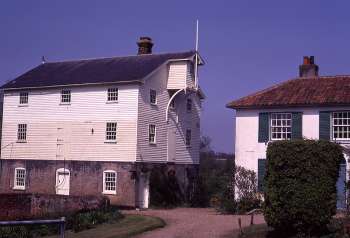 |
|
May 1972 |
|
In 1838 Henry
Warne had a factory in Mere Street, Diss where he employed 40 men, 3 women
and 20 boys making drabbets, huckabacks, sheeting and shirting. Some of
the men worked for up to 16 hours a day in their own homes for about 16s
a week. Around 1840 Henry Warne closed the Diss factory and moved to Hoxne
Mill. In 1844, White's directory listed Henry Warne as also running nearby Syleham mill. |
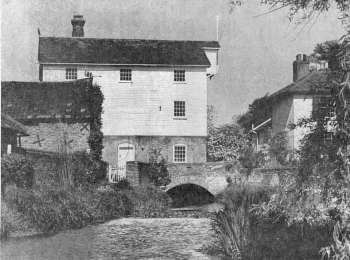 |
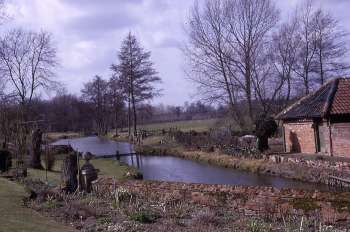 |
|
28th May 1974
|
March 1968 |
|
Lot 70 of Dame Mary Kerrison's Trust Estate put up for auction on Wednesday 14th July 1897 |
|
The Highly Valuable Property
|
situate in the Parish of Hoxne, Suffolk, and Thorpe
Abbots, Norfolk, and consisting of A substantially Brick-Built and Slated Residence known as Waveney House which contains Hall and 2 Reception Rooms, Kitchen and Scullery, Dairy, Pantry, 5 Bedrooms, and Box Room, also Cottage adjoining containing 4 rooms, Wood-barn, Coal House, and 2 W.C.'s, together with |
|
THE THREE STOREY MILL
|
and Premises with Water wheel and 2 Main wheels, Boiler
house, Engine room, Office, 2 Bay Cart-shed, 3 Bay Open shed, Lean-to Open
shed, Gig house, Calves' place, stabling for 4 horses with Granary over,
and 4 bay open shed, and Cow-house &c., also |
|
FIVE ENCLOSURES OF VALUABLE MEADOW
LAND
|
The Whole Comprising 12A. 0R. 17P. No. 650 is let (with
other property) to Mr. J.R. Neeve at an
entire rent of £389 2s. 0d., of which £2 15s.0d. is apportioned
to this Lot. The remainder is let to Mr. E.C. Pike at a rent of £15
0s 0d. |
| Lot 70 was purchased by John Chase jnr. for £500 |
|
In the 1920s
George Bridges who lived in the cottage behind the mill was the miller
under John Chase's ownership. George would net many eels and these were
frequently sent to Billingsgate market in London. |
|
In 1929 Alfred
Dyball sold the mill, the mill house, cottage, farm buildings, the farmhouse,
a fine old barn and about 50 acres of land to Leonard Walker R.I., artist,
for £1500. Leonard Walker's son Renton, ran the mill and farm. He
would take in corn from nearby farms for grinding and charged 6d per coomb.
|
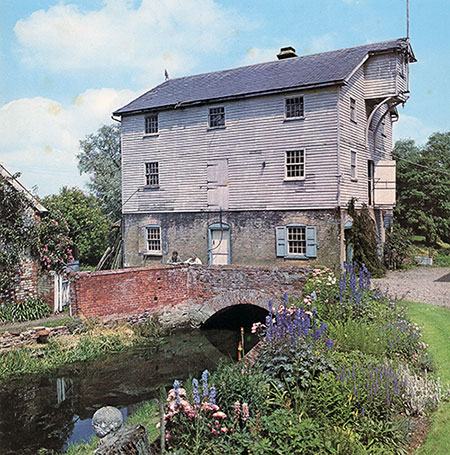 |
|
c.1962 |
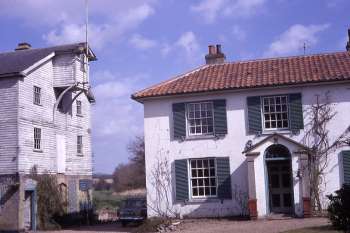 |
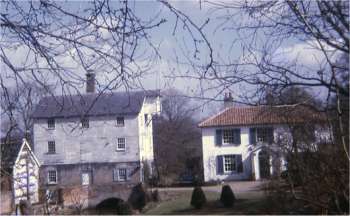 |
|
Mill house and mill March 1968
|
March 1968 |
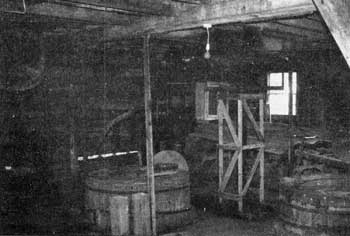 |
|
Mill
interior 1988
|
|
Towards the end of its working life the mill was using a ½ sack Tattersall Midget Roller plant, although this proved to be a constant source of trouble. |
My name is Oliver Robin Charlton normally called Bob. I am the son of Oliver Charlton who owned the Hoxne mill from 1935 to 1951. I lived there for 6 years of my youth (1945-1951). They moved back in after WWll, during which time the property was rented. My father refurbished some of the old mill wooden (apple wood) cogs and teeth so that the water wheel could drive an electrical generator that provided power to the house and buildings. This backed up by an internal combustion engine and there was also a large battery bank to store power. I believe it was also possible to drive 1 pair of stones for show. |
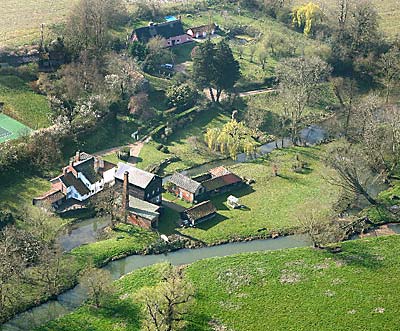 |
5th April 2007 |
I've been tracing my distant relatives in Norfolk & Suffolk. |
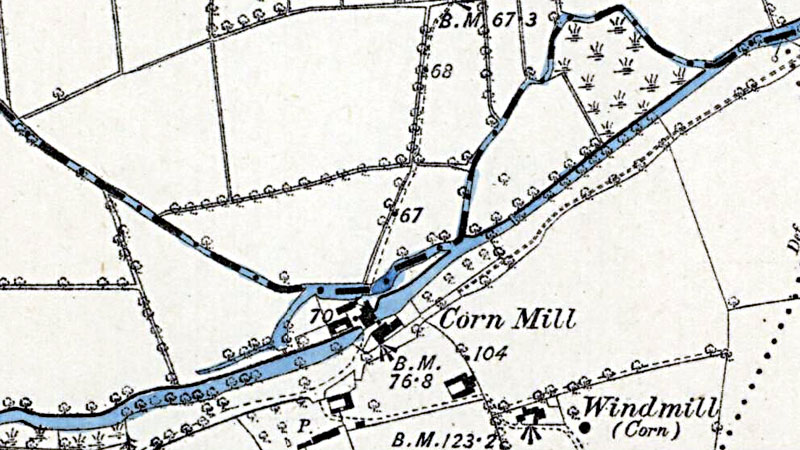 |
O. S. Map 1884 |
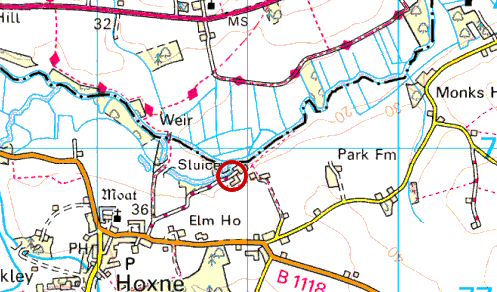 |
O.S. Map 2005 Image reproduced under licence from Ordnance Survey |
|
Kirby's map
1736 |
If you have any memories, anecdotes or photos please let us know and we may be able to use them to update the site. By all means telephone 07836 675369 or
|
| Nat Grid Ref TM189778 | Copyright © Jonathan Neville 2003 |